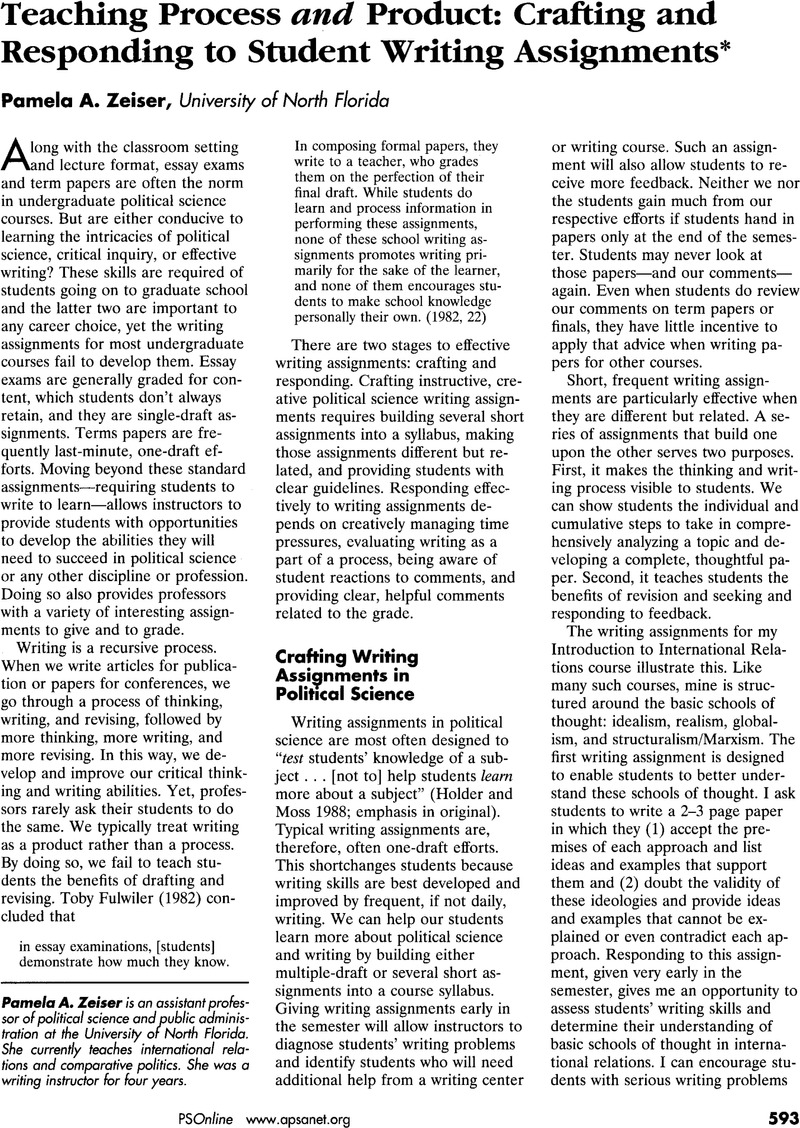Article contents
Teaching Process and Product: Crafting and Responding to Student Writing Assignments
Published online by Cambridge University Press: 02 September 2013
Abstract

- Type
- News
- Information
- Copyright
- Copyright © The American Political Science Association 1999
Footnotes
Thank you to Kimberlee Gillis-Bridges, Lissa Peterson, and Janet Retseck, with whom I team-taught workshops on Writing Strategies for College Instructors of Political Science and Economics at the Claremont Graduate University.
References
- 4
- Cited by




